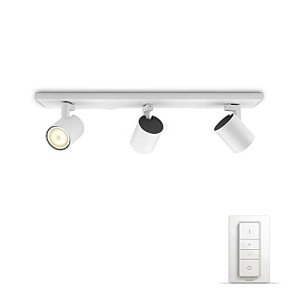Interior Lighting in the UK: A Comprehensive Guide
Interior lighting plays a crucial function in producing an environment, boosting functionality, and revealing personal style within homes and organizations. In the UK, where the weather condition can be unpredictable, efficient lighting is not just about aesthetic appeals however likewise about making areas feel warm, inviting, and practical. This post looks into different aspects of interior lighting, encompassing types, patterns, pointers, and frequently asked concerns.
Understanding the Importance of Interior Lighting
Lighting is typically thought about the backbone of interior style. It affects state of mind, performance, and the viewed size of spaces. The ideal lighting can:
- Enhance the architectural features of a room.
- Emphasize artwork and design.
- Enhance security and security.
- Influence efficiency in work areas.
- Produce a comfortable atmosp here for relaxation.
Kinds Of Interior Lighting
Reliable lighting design normally integrates three primary types of lighting: ambient, job, and accent.
1. Ambient Lighting
This is the main source of light in a room, providing overall illumination. Common sources include:
- Ceiling-mounted fixtures
- Chandeliers
- Recessed lighting
- Soft wall sconces
Ambient lighting develops a structure from which other lighting types can build on.
2. Task Lighting
Job lighting focuses on specific locations to assist in activities such as reading, cooking, or working. This type of lighting assists to reduce eye pressure and can significantly affect performance. Typical sources include:
- Desk lamps
- Under-cabinet lights in cooking areas
- Reading lamps beside beds
- Mounted lights focused on work surface areas
3. Accent Lighting
Accent lighting adds drama and highlights particular items or locations, such as artwork or architectural functions. This type of lighting can create visual interest and depth in a space. Sources consist of:
- Picture lights
- Decorative lamps
- Uplighters
- LED strip lights along racks
Making use of a mix of these lighting types can lead to a well-balanced and multifunctional area.
Popular Lighting Trends in the UK
The interior lighting landscape in the UK continues to develop, influenced by style patterns, technology, and consumer preferences. Here are some popular patterns to watch:
- Smart Lighting: The arrival of smart innovation has actually transformed how individuals handle lighting in their homes. Smart bulbs and systems like Philips Hue permit users to manage brightness and color temperature through their smartphones.
- Minimalist Designs: Sleek, simple designs that blend flawlessly with interiors are dominating the marketplace. Pendant lights with fragile frames, LED strips, and geometric shapes are particularly trendy.
- Industrial Lighting: This trend showcases raw, discovered products. Metal fixtures and Edison bulbs provide a vintage touch that is both trendy and practical.
- Eco-Friendly Options: With increasing awareness of sustainability, lots of customers are turning to energy-efficient LED options and fixtures made from sustainable products.
Tips for Effective Interior Lighting Design
Creating an effective lighting plan requires thoughtful factor to consider of numerous elements. Here are some pointers:
- Consider the Purpose of Each Room: Every area has a various function. Consider what activities will occur and what type of lighting will support those activities.
- Layer Lighting: Employ multiple types of lighting within a room to develop depth and flexibility. Combine ambient, job, and accent lighting to improve both looks and performance.
- Use Dimmers: Dimmers enable control over brightness levels, enabling users to adjust lighting according to mood and time of day.
- Incorporate Natural Light: Make the many of natural light sources like windows. Usage light, reflective colors for walls and home furnishings to maximize brightness.
- Think Of Color Temperature: Different color temperatures (measured in Kelvins) produce various atmospheres. Warmer temperatures (around 2700K-3000K) are relaxing, while cooler temperature levels (4000K+) provide a more medical or energetic feel.
Interior Lighting Mistakes to Avoid
To produce a well-lit space, it's vital to avoid typical lighting mistakes. Here are some mistakes to expect:
- Underestimating Wattage: Insufficient wattage can cause dim, unwelcoming areas.
- Ignoring Scale: Fixtures that are too small for a room can watch out of location, while large fixtures can overwhelm an area.
- Over-reliance on Ceiling Lights: Relying solely on overhead lighting can produce uninviting shadows; balance with additional lighting types.
- Poor Placement: Misplaced lights can create locations that are too bright or too dark. Plan positionings thoughtfully.
FAQ Section
1. What is the difference in between warm white and cool white light?
Warm white light (2700K to 3000K) creates a relaxing, welcoming environment, ideal for living rooms and bed rooms, while cool white light (4000K to 5000K) is more fit for work areas as it enhances concentration and clearness.
2. How can I make the most of natural light in my home?
To maximize natural light, use light-colored walls, strategically place mirrors to reflect light, and choose for sheer window coverings that permit sunshine to travel through.
3. How do I select the best lighting fixture?
Consider the size of your space, the design of your decoration, and the function of the area. Ensure the scale of fixtures complements the room and matches the overall aesthetic.
4. Are LED lights better than traditional bulbs?
Yes, LED lights are more energy-efficient, have a longer life expectancy, and can offer a series of color temperatures, making them a more sustainable lighting alternative.
5. What should I do if particular locations of my room stay too dark?
Consider adding additional job or accent lighting to lighten up those locations. Floor lamps, wall sconces, or perhaps strategically positioned table lamps can assist ease dark spots.
Interior lighting is a vital aspect of home and company style across the UK. Comprehending the various types, present patterns, and best practices can help home owners in producing spaces that are not only stylish but likewise practical. With thoughtful factor to consider and preparation, reliable lighting can transform any environment, improving both ambiance and use for years to come.

